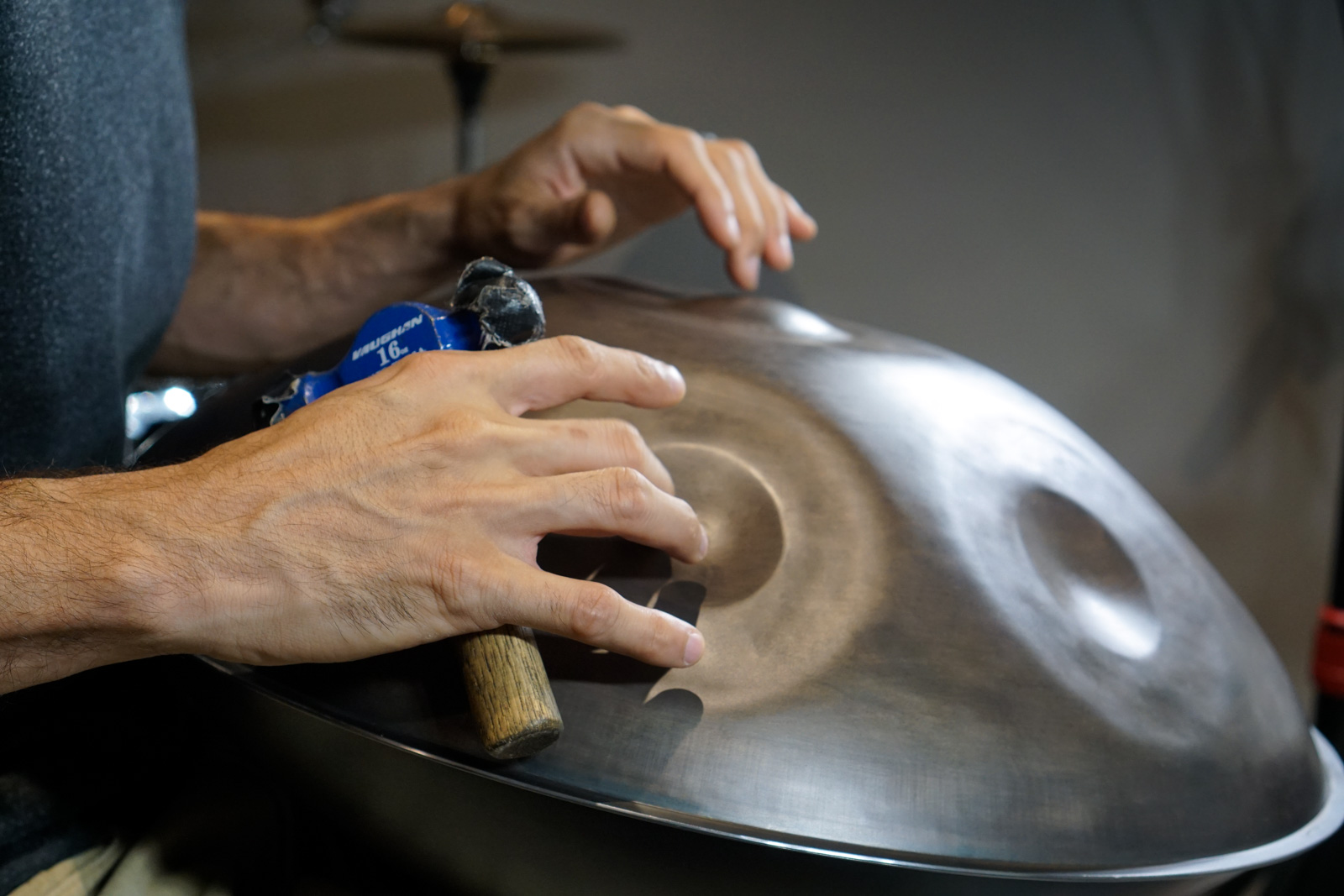A good handpan has high-quality steel, well-tuned notes, and excellent craftsmanship. It should produce a balanced and resonant sound across all notes with no inconsistencies or dissonances. Additionally, it should be sturdy, well-balanced, and have no visible blemishes or wobbling.
The Quality of the Steel
The quality of the steel used in the handpan is one of the most crucial factors that determine the sound and overall quality of the instrument. The most common type of steel used in handpans is called Nitrided Steel, which is a type of steel that has been specially treated to make it more durable and resistant to rust.

However, not all Nitrided Steel is created equal, and some manufacturers may use lower quality steel that does not produce the same level of resonance and sustain as higher quality steel. When looking for a good handpan, it is essential to consider the quality of the steel used in its construction.
The Tuning and Scale
Another critical factor to consider when evaluating the quality of a handpan is its tuning and scale. Handpans are typically tuned to a specific scale, which gives them their unique sound. There are many different scales that handpans can be tuned to, each with its own unique character and tonal qualities.
When evaluating a handpan, it is important to listen to its sound and determine whether the tuning and scale are to your liking. Additionally, the handpan should be in tune across all of its notes, with no noticeable inconsistencies or dissonances.
The Craftsmanship
The craftsmanship of the handpan is another essential factor to consider when evaluating its quality. Handpans are typically handcrafted by skilled artisans who take great care in the construction of each instrument.

A well-made handpan will have a smooth surface, with no visible bumps or blemishes. Additionally, the notes on the handpan should be evenly spaced and of consistent size and depth. The overall build quality of the handpan should be sturdy and well-balanced, with no wobbling or instability.
What should I look for in a handpan?
When looking for a handpan, you should consider the quality of the steel, the tuning and scale, and the craftsmanship. The steel should be of high quality and provide a balanced and resonant sound. The tuning and scale should be to your liking and in tune across all notes. The craftsmanship should be excellent, with no visible blemishes, well-spaced notes, and a sturdy, well-balanced build.
How much does a decent handpan cost?
The cost of a decent handpan can vary greatly depending on its quality and craftsmanship. Generally, a good quality handpan can cost anywhere from a few thousand dollars.
Are cheap handpans worth it?
While it may be tempting to purchase a cheap handpan, it is important to remember that you get what you pay for. Cheap handpans may be made with lower-quality steel and craftsmanship, resulting in inferior sound and shorter lifespan. It is better to invest in a higher-quality handpan that will provide you with years of enjoyment.
What is the best handpan material?
The most common material used for handpans is Nitrided Steel, which has been specially treated to make it more durable and resistant to rust. However, the quality of the Nitrided Steel can vary, and some manufacturers may use lower-quality steel.
Other materials that are sometimes used for handpans include Stainless Steel, Carbon Steel, and Titanium. Ultimately, the best handpan material will depend on personal preference and the sound that you are looking to achieve.
FAQs
Can I learn to play a handpan if I have no musical experience?
Yes, anyone can learn to play the handpan, regardless of their musical experience. However, like any musical instrument, it takes practice and dedication to become proficient.
How much should I expect to pay for a handpan?
Handpans can range in price from a few hundred dollars to several thousand dollars, depending on their quality and craftsmanship.
What is the best material for a handpan?
Nitrided Steel is the most common material used for handpans, as it provides a good balance of durability and tonal quality.
Conclusion
Choosing the right handpan can be a challenging task, but by considering the quality of the steel, the tuning and scale, and the craftsmanship, you can ensure that you get a handpan that will provide you with many years of enjoyment.
Additionally, it’s essential to listen to the sound of the handpan and make sure that it resonates with you on a personal level. With a little research and careful consideration, you can find the perfect handpan for your needs and start exploring the beautiful world of handpan music.



[…] are several factors to consider when evaluating the quality of a handpan. These include the tone, sustain, and overall craftsmanship of the instrument. A good handpan […]